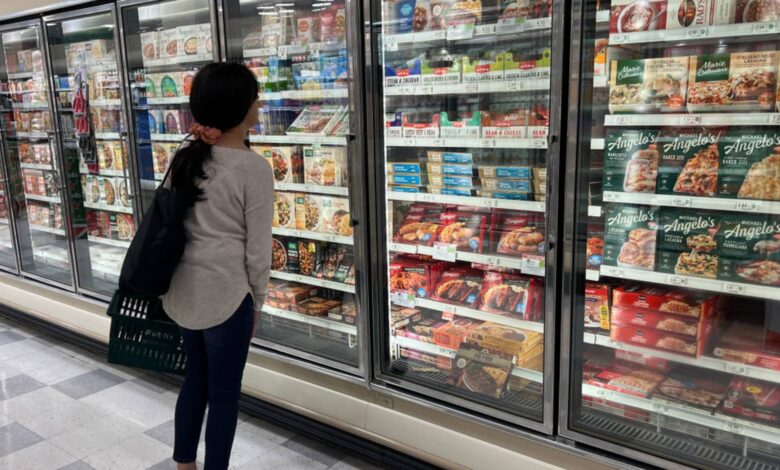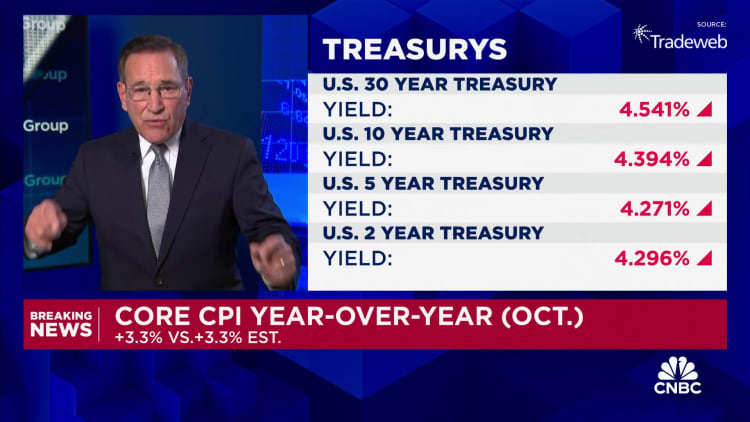Annual inflation rate hit 2.6% in October, meeting expectations


Inflation perked up in October though pretty much in line with Wall Street expectations, the Bureau of Labor Statistics reported Wednesday.
The consumer price index, which measures costs across a spectrum of goods and services, increased 0.2% for the month. That took the 12-month inflation rate to 2.6%, up 0.2 percentage point from September.
The readings were both in line with the Dow Jones estimates.
Excluding food and energy, the move was even more pronounced. The core CPI accelerated 0.3% for the month and was at 3.3% annually, also meeting forecasts.
Stock market futures nudged higher following the release while Treasury yields fell.
Energy costs, which had been declining in recent months, were flat in October while the food index increased 0.2%. On a year-over-year basis, energy was off 4.9% while food was up 2.1%.
Despite signs of inflation moderating elsewhere, shelter prices continued to be a major contributor to the CPI move. The shelter index, which carries about a one-third weighting in the broader index, climbed another 0.4% in October, double its September move and up 4.9% on an annual basis. The category was responsible for more than half the gain in the all-items CPI measure, according to the BLS.
Used vehicle costs also rose, up 2.7% on the month while motor vehicle insurance declined 0.1% but was still higher by 14% for the 12-month period. Airline fares jumped 3.2% while eggs tumbled 6.4% but were still 30.4% higher from a year ago.
Inflation-adjusted average hourly earnings for workers increased 0.1% for the month and 1.4% from a year ago, the BLS said in a separate report.
The readings took inflation further away from the Federal Reserve’s 2% goal and could complicate the central bank’s monetary policy strategy going forward, particularly with a new administration taking over the White House in January.
“No surprises from the CPI, so for now the Fed should be on course to cut rates again in December. Next year is a different story, though, given the uncertainty surrounding potential tariffs and other Trump administration policies,” said Ellen Zentner, chief economic strategist at Morgan Stanley Wealth Management. “The markets are already weighing the possibility that the Fed will cut fewer times in 2025 than previously thought, and that they may hit the pause button as early as January.”
President-elect Donald Trump’s plans to implement more tariffs and government spending have the potential both to boost growth and aggravate inflation, which remains a substantial problem for U.S. households despite easing off its meteoric peak in mid-2022.
Consequently, traders in recent days have scaled back their anticipation for Fed rate cuts ahead. The central bank already has lopped off 0.75 percentage point from its key borrowing rate and had been expected to move aggressively ahead.
However, traders now expect just another three-quarters of a point in cuts through the end of 2025, about half a point less than priced in before the presidential election.



